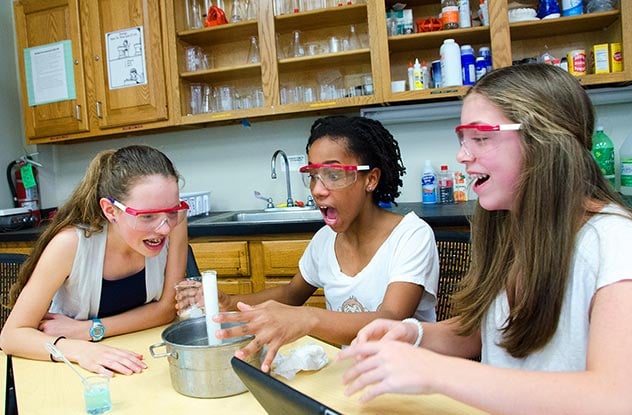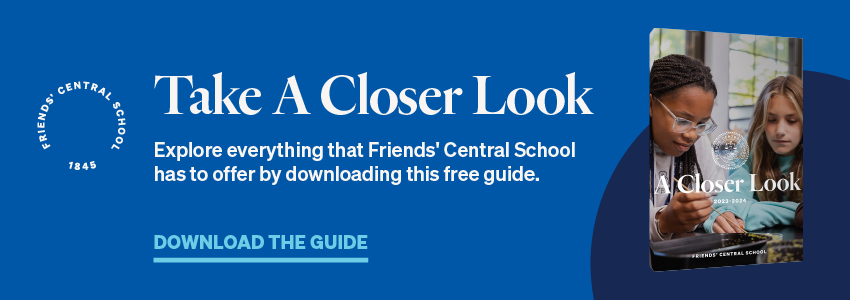
Choosing the school that your child is ultimately going to attend can be a nerve-wracking experience. The school you pick for your children will be the place they spend most of their waking hours. The culture and the curriculum are sure to have a big impact on them, and you want to make sure that you’re making the right choice!
While it might be easy to narrow down your options to a certain type of school—say, an independent school over a public school—directly comparing your options within a specific category can be overwhelming.
When comparing independent schools, you’re likely to make your first round of cuts after asking a series of questions to try and identify which schools best match the educational goals that you’ve set for your child. But asking questions will only do so much good. Once you’ve narrowed down your options to a handful of schools that seem like a good fit, your best bet will be to actually make time to go and visit each of the schools so that you can judge for yourself which will be best for your child.
Ready to take the next step? Come visit Friends' Central to see what we're all about!
In addition to helping you confirm or disprove various things that you’ve heard about the schools on your shortlist, having some first-hand observations about your top picks will make it much easier to select a school that you believe will be the best fit for your child.
Here are some tips to help you get the most out of your campus tours.
1. Make sure you see multiple classes in action.
Observing classes is very possibly the single most important thing that you will do during your campus tour, because it will allow you to see what your child’s experience in the classroom will be like.
Important factors that you should evaluate when you are in the classroom include things like:
- Student Engagement: Are the students engaged and actively participating in the lesson? Is it clear that participation is expected from all students, or is it seen as an afterthought?
- Teaching Style: Is the teacher a “guiding expert” showing students the way, or are they more of a lecturer? This should match with the school’s educational philosophy, as well as your own educational goals for your child.
- Logistics: How many students are in the room? Though a school may tout a low student-to-teacher ratio, it is always best to see this for yourself and confirm with your first-hand observations.
But you can’t just observe one classroom and take it as-is. The key to attaining an accurate portrayal of the classroom experience at the school you are visiting is to visit multiple classes as they are in session. We recommend that you view at least three classrooms, preferably in different subject areas so that you can walk away with a clear vision of what your child will experience as a student.
2. Make observations as you walk around.
For the most part, campus tours are carefully staged by the school you are visiting. They want to show you their best teachers and their most engaged students so that you walk away from the tour impressed and excited to enroll your child. That’s just the nature of the admission process.
Naturally, you should aim to cut through the choreography so that you gain a better understanding of what it is like to be a part of the school’s community. The best way for you to do this is to make your own observations as you walk around the campus.
Ask yourself these questions as you are ushered from classroom to classroom:
- Do the students look happy and engaged, or stressed out? This will give you a sense of the social setting at the school, as well as the school/life balance your child can expect.
- Are the students self-directed or are they carrying hall passes? This will help you understand the level of trust and autonomy that students enjoy at the school.
- Do you see students and teachers interacting outside of the classroom? This will help you understand the role that you can expect to play at the school in question.
3. View as much of the campus as possible.
When it comes to education, setting matters. If a school’s facilities are not conducive to learning—say, they are outdated or in need of an upgrade—then your child may struggle to hit educational goals.
Viewing classrooms in session should give you a sense of what the average classroom on campus looks like—how desks are arranged, whether or not there are in-class libraries, whether or not there is easy access to computers—the facilities outside the classroom are just as important. As you make your way through campus, observe things like:
- Is the campus beautiful? A clean, tidy, and well-groomed campus shows that students and facility take pride in their school and their community, while a dull, drab, and messy or unkempt facility will also speak volumes.
- You’ve seen what the average classroom looks like, but what about “specialized” classrooms like science labs, music rooms, the library, etc.? And, how often will your child spend in these specialized places. A fabulous space that your child will rarely get to use isn’t going to have much of an impact on his or her education.
- Are there spaces for students to work both independently and collaboratively? Both are incredibly important to helping your child develop autonomy and teamwork skills. Spaces for collaboration indicate that a school understands the importance of students working together rather than competing against one another—a life and workplace skill.
4. Make sure you get to talk to kids
What students say about their own school speaks volumes. They are at school every day and can speak to their own experience in a way that no one from the admissions team ever could. Ask students what they think of their classes, their homework, their community. If they love it, ask them why. Try to see your own child, or what your child might grow to be, through the students you meet.
The First Step Into the Future
Selecting the school that your child is going to attend is a major step for your family and your child - it’s the first step into the future. As such, it isn’t a decision that you should rush through. Once you’ve narrowed your options into a shortlist, it’s important for you to actually go and visit each of the schools that you are considering for your child. The tips above will help you get the most out of those visits so that you walk away better informed and with a clearer sense of whether or not this is where your child belongs.



